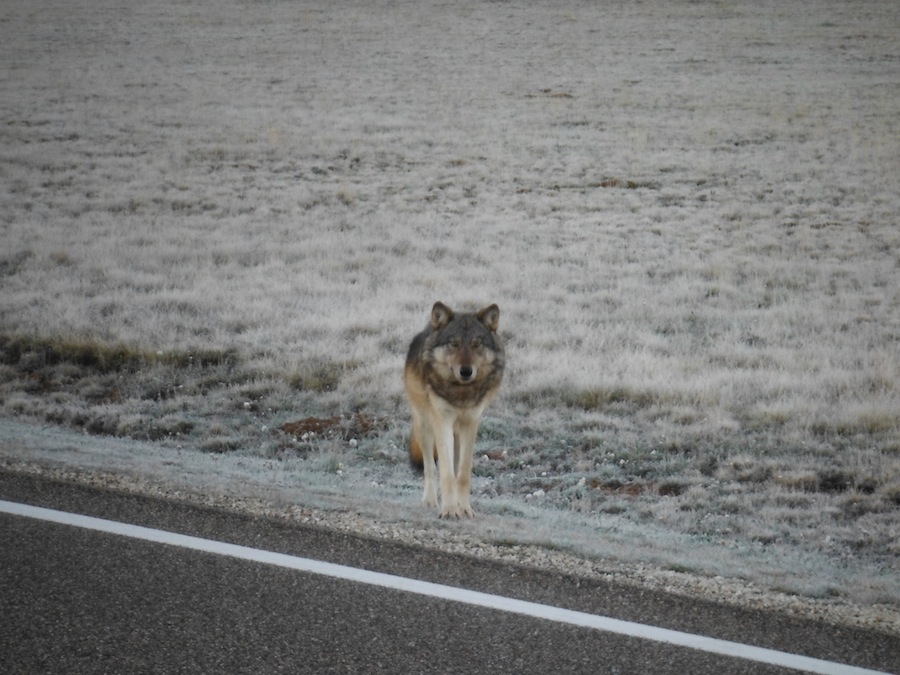Grand Canyon Gray Wolf May Have Been Shot in Utah

After a 500-mile (800 kilometers) trek across the West, a lone wolf's journey may have come to an end this weekend.
A coyote hunter in Utah mistakenly shot and killed an endangered gray wolf, which wildlife groups worry was the same wolf photographed near the Grand Canyon this fall. That animal had strayed from its pack in the northern Rockies and was the first of its species to roam Arizona in 70 years.
The slain wolf, which was wearing a radio collar, was shot near the south end of the Tushar Mountains near Beaver, Utah, on Sunday (Dec. 28), the Utah Division of Wildlife Resources (DWR) said in a statement. [In Photos: The Fight Over Gray Wolves' Endangered Status]
When the hunter realized the animal wasn't a coyote, he alerted state officials who then contacted the U.S. Fish and Wildlife Service. The federal agency confirmed the animal was a 3-year-old female gray wolf that had been outfitted with its collar near Cody, Wyoming, earlier this year. Wildlife groups are still waiting to hear whether DNA tests will confirm that the wolf was really the lone female they had been tracking since October.
"This was a worry of ours," said Michael Robinson, with the Center for Biological Diversity. "Personally, I'm very saddened by it."
Gray wolves were wiped out from Arizona in the 1940s. That's why Robinson and other conservationists were excited by the news this past October that a gray wolf was repeatedly spotted near the North Rim of the Grand Canyon. Federal officials failed to capture the wolf to remove its radio collar, but DNA tests of the wolf's feces confirmed that it was a female from the northern Rocky Mountains population.
Although gray wolves have been removed from the endangered species list (and are even legally hunted) in some parts of the country, they still receive federal protections in many states, including Arizona and Utah. It's not clear whether the hunter will face any charges.
Sign up for the Live Science daily newsletter now
Get the world’s most fascinating discoveries delivered straight to your inbox.
"This shows how vulnerable gray wolves are and how important real protection is," Robinson told Live Science. "What we need is a response that follows the Endangered Species Act and prevents these kinds of occurrences from happening again. We think a thorough investigation is imperative."
Robinson added that better education programs could help teach people what gray wolves look like and make people aware that the animals are endangered.
Follow Megan Gannon on Twitter and Google+. Follow us @livescience, Facebook & Google+. Original article on Live Science.










